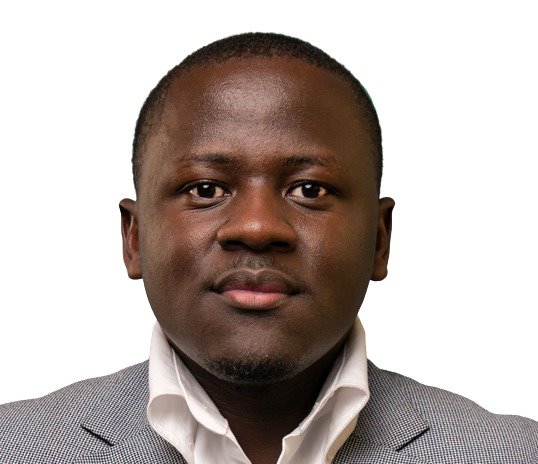Scaling NB-IoT to Drive 5G Adoption for a Smart City - A Case Study of Nairobi City
Written by Leonard Mabele, Joseph Sevilla, and Oscar Onyango
The fifth generation (5G) of mobile telecommunications has ushered in a new era to leapfrog massive adoption of the Internet of Things (IoT). Under its pillar of massive Machine-Type Communications (mMTC), it is tipped to drive more consumer and Industrial IoT as well as mission-critical machine-to-machine (MC-M2M) applications. While fruits of 5G are already being reaped in the developed economies to the extent that the 6th generation (6G) studies have begun, the developing economies are still at their infant stage in identifying potential opportunities of 5G. Kenya, one of the most vibrant technology countries on the African continent is currently running pilots to determine the best use case for commercial deployments in the mid-band frequencies (sub-6 GHz band). In this paper, we highlight the roadmap of adopting 5G for a smart City using Narrowband-IoT (NB-IoT) as the bridge of transition.The roadmap is based on a pilot study of IoT-based environmental monitoring in Nairobi – the capital city of Kenya. The paper highlights different IoT use cases that can be powered by 5G to transform Nairobi to a smart city through the deployment of an iterative NB-IoT model. Further, we also share recommendations on strategic adoption of IoT and Future Networks for more smart cities in Africa.
Keywords—IoT, Low Power Wide Area Networks, NB-IoT, 5G
Introduction
As more devices get connected to the Internet each day through the Internet of Things (IoT) ecosystem, there is a growing need to consider the devices’ energy requirements, the application protocols used across various networks and applications; their potential scalability and reliability, and available middleware frameworks, among other factors [1]. However, the most critical pillar of IoT is connectivity. It can be viewed as the pipe that glues together the physical and digital worlds in diverse application scenarios that can transform buildings, homes, power grids, farms, cities, etc. into smart systems [2]. The research work presented by authors in IoT Fundamentals: Networking Technologies, Protocols and Use Cases for the Internet of Things [3] shows the impact that IoT has on smart city applications such as air pollution monitoring, traffic and parking control, as well as waste management, while leveraging LoRaWAN technology. LoRaWAN is an example of an unlicensed low power wide area network (LPWAN) that enables an optimal wireless connectivity environment for energy-limited IoT devices [4]. Other unlicensed LPWANs include Sigfox, nWave, Dash7, Ingenu RPMA, Low Power Wi-Fi, and Weightless, among others [5]. The aim of LPWANs is to support implementation of very low-cost, small form factor, low-throughput devices with very low power consumption. Hence, a trade-off of battery life, bandwidth and constrained duty cycle becomes key in order to realize the desired low cost [6]. This trade-off further enables LPWANs to get the multiple-kilometre radio links implied by “Wide Area” in their name [7]. One notable LPWAN envisaged to leapfrog IoT reliability and scalability is the Narrowband IoT (NB-IoT). Unlike its unlicensed counterparts, NB-IoT is a licensed LPWAN based on cellular technology which can handle 100,000+ NB-IoT devices at the same time on a single NB-IoT network cell [8]. NB-IoT holds the advantage over unlicensed LPWANs due to its potential for massive deployments in high-density environments and its offer of wide network coverage for rural areas, as well as deep network coverage penetration into buildings - even below ground level [9]. Moreover, its support within the 3GPP standardization framework gives it stronger support for deploying hundreds of thousands of IoT devices per square kilometer. The emergence of NB-IoT technology under the Release 15 relates the LPWAN technology to 5G, forming a great foundation of implementing IoT use cases in a bottom-up framework driven by its low-power advantage to the dense real-time IoT applications that can be powered by 5G [10]. Hence, in this paper, we compare and relate the NB-IoT technology to 5G while showing IoT applications within a smart city. We share, from a theoretical point of view, how NB-IoT can form a bridge of adopting 5G for a smart city using Nairobi city as a case study. Our work in this paper, therefore, is presented as follows: Section II covers an overview of a smart city and the smart technology needs that can be adopted for Nairobi City, Section III gives an outline of NB-IoT and its close relationship with 5G, Section IV presents a pilot study scenario that can leverage NB-IoT on environmental monitoring based on Nairobi City. Section V provides a conceptual framework of scaling NB-IoT to drive 5G adoption for Nairobi City, Section VI shares our recommendations on transforming Nairobi into a smart city.
Overview of a Smart City and IoT the Context of Nairobi
Going by the definition provided by the authors in NB-IoT Use Cases and Devices [11], a smart city is an urban area that uses various devices and technologies to gather datasets. The datasets include data from citizens, intelligent devices, buildings, and assets which can be correlated through proper algorithms to improve the quality of life of the citizens within such an urban area. The key driving point for the need of a smart city is the traditional challenge that emanates when urban populations rapidly starts increasing. Earth.org lists cities such as Singapore, New York, Helsinki, Zurich, Oslo, Amsterdam, and Seoul as smart cities adopting smart technologies as a way to make them more energy efficient and minimizing carbon emissions. While these aspects only form a part of the energy and air quality needs of a smart city, from a climate change perspective, a smart city in general must make use of technology, smart devices, and improved infrastructure to gradually gravitate toward a smart city status [12]. Although some governments, such as the ones in India, award a smart city (as described in 5G LTE Narrowband Internet of Things (NB-IoT) title by considering the cleanliness of a city as described in [13], it is generally safe to decsribe a smart city as a city development concept based on society, economy, people, life, environment, transportation, government, and other socio-economic indicators.
In the IoT-enabled smart city context, safety enhancement is accomplished through the use of artificial intelligence (AI) methodologies for making healthcare services more readily available [14]. Further, drones can provide an efficient means of serving a smart city through optimal design of appropriate IoT networks [15]. The scalability of an IoT network depends on attributes across the smart city. These include how densely users sites are geographically distributed across the city and how many nodes are located in a given area, as well as the projected growth in network access demand for certain type of data requirements, such as peak or off-peak data rate during different times of a day and concentration. All these can be translated into scaling up the network in terms of data bandwidth required across certain areas within the smart city.
Conclusion
In the of Industry 4.0 era, a smart city is not complete without a demonstration of the use of the Internet of Things (IoT) technologies. The pervasiveness of IoT makes its application to be embedded in every sector, such as transportation, power grid, healthcare, buildings, agriculture, and many more [16]. With more citizens looking to live in the cities as per the United Nations statistics, IoT implements ubiquitous techniques through the use of sensors to monitor waste bins, traffic systems, health information exchange points, water, and energy usage, etc. and communicate in real-time with software systems and actuators that ought to respond appropriately while leveraging the Internet [17]. This ubiquity of IoT is what gives a city the “wow” factor, leading to its branding as a smart city. It elucidates an advanced approach of efficiently managing resources within a city, while providing citizens with first class service and experience [18].
References
- O. Vermesan and P. Friess, Internet of Things - From Research and Innovation to Market Deployment, Aalborg: River Publishers, 2014.
- A. Gilchrist, Industry 4.0: The Industrial Internet of Things, Bangken: Apress, 2016.
- D. Hanes, G. Salgueiro, R. Barton and J. Henry, IoT Fundamentals: Networking Technologies, Protocols and Use Cases for the Internet of Things, Indianapolis: Cisco Press, 2017.
- A. Ustundag and E. Cevikcan, Industry 4.0: Managing The Digital Transformation, Birmingham: Springer, 2018.
- G. Akpakwu, B. Silva, G. Hankie and A. M. Abu-Mahfouz, "A Survey on 5G Networks for the Internet of Things: Communication Technologies and Challenges," IEEE Access, vol. 6, no. 1109, pp. 3619-3647, 2016.
- B. Jolly , "IoT Device Battery Life: Go Slow for Fast Insights Into Challenging Conditions," in International Midwest Symposium on Circuits and Systems, Colorado, 2021.
- A. Glam, B. Farbman and I. Ashkenazi, "Complete IoT Solution for Smart Cities Using LoRaWAN Technology," in International Conference on Microwaves, Antennas, Communications and Electronic Systems, 2021.
- M. I. Nashiruddin and M. A. Nugraha, "Long Range Wide Area Network Deployment for Smart Metering Infrastructure in Urban Area: Case Study of Bandung City," in 4th International Conference on Information and Communications Technology, 2021.
- Internet Engineering Task Force, "Low Power Wide Area Network Overview," IETF, Dublin, 2018.
- Q. M. Qadir, T. A. Rashid, N. K. Al-Salihi, B. Ismael, A. A. Kist and Z. Zhang, "Low Power Wide Area Networks: A Survey of Enabling Technologies, Applications and Interoperable Needs," IEEE Access, vol. 6, no. 2018, pp. 77454-77473, 2018.
- K. Heins, NB-IoT Use Cases and Devices, Munich: Springer, 2022.
- U. Raza, P. Kulkarni and M. Sooriyabandara, "Low Power Wide Area Networks - An Overview," in IEEE Communications Surveys and Tutorials, Manitoba, 2017.
- H. Fattah, 5G LTE Narrowband Internet of Things (NB-IoT), London: Taylor and Francis Group, 2019.
- B. Fong, H. Kim, A. C. M. Fong, G. Y. Hong and K. F. Tsang, Self-Cognizant Prognostics for the Design and Implementation of Mission-Critical Telemedicine Systems under the Influence of Heavy Rainfall, IEEE Communications Magazine, vol. 60, no. 8, pp. 80-84, Aug. 2022.
- B. Fong, A. C. M. Fong and K. F. Tsang, Capacity and Link Budget Management for Low Altitude Telemedicine Drone Network Design and Implementation, IEEE Communications Standards Magazine, vol. 5, no. 4, pp. 74-78, Dec. 2021.
- D. Chandramouli, R. Liebhart and J. Pirskanen, 5G for the Connected World, Munich: John Wiley and Sons Inc., 2019.
- U. Ependi, A. F. Rochim and A. Wibowo, "Smart City Assessmnet for Sustaianble City Development on Smart Governance: A Systemic Literature Review," in 2022 International Vonference on Decision Aid Sciences and Applications (DASA), Thailand, 2022.
- K. V. Sreya, R. Amirthrajan and P. Praveenkumar, "Smart Bin for a Smarter City," in 2022 International Conference on Computer Communication and Informatics, Coimbatore, 2022.
To view all articles in this issue, please go to October 2022 eNewsletter. For a downloadable copy, please visit the IEEE Smart Cities Resource Center.



To have the eNewsletter delivered monthly to your inbox, join the IEEE Smart Cities Community.
Past Issues
To view archived articles, and issues, which deliver rich insight into the forces shaping the future of the smart cities. Older eNewsletter can be found here. To download full issues, visit the publications section of the IEEE Smart Cities Resource Center.



